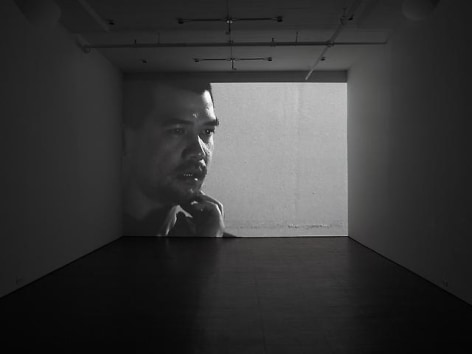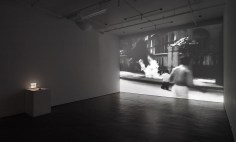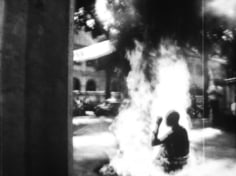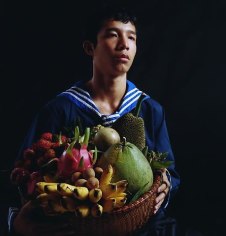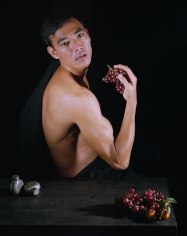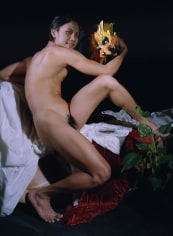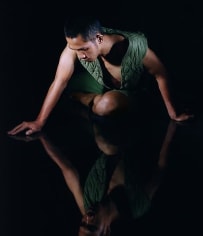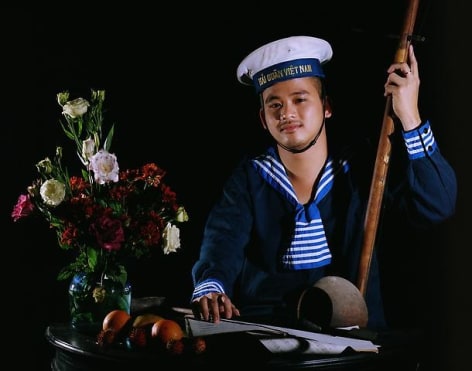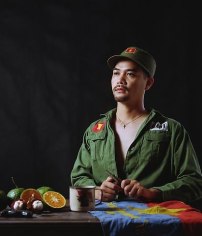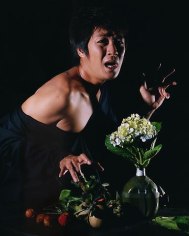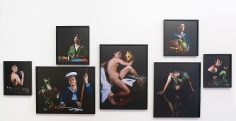Alexander Gray Associates presented an exhibition of new work by Los Angeles-based artist Bruce Yonemoto (b. 1949, San Jose, CA). On view are a recent video projection and a series of photographs, included in Yonemoto’s 2010 solo exhibition
at the St. Louis Art Museum.
The video Before I Close My Eyes (2010) appropriates and re-casts a pivotal scene from Ingmar Bergman’s 1966 film Persona, reconfiguring its social and political framework. In Yonemoto’s scene, the female protagonist is replaced by Asian men, who watch television footage from a 1963 broadcast of a Buddhist monk practicing self-immolation. The scene loops, moving image within moving image, eliciting a mute response from the layers of viewers, as the highly charged image of political protest loses its power through mediated repetition.
Yonemoto’s use of appropriation continues in the photographic series Beyond South: Vietnam (Caravaggio) (2010). Here the artist recreates masterpieces by the16th century Baroque painter, Michelangelo Caravaggio. Each photograph re-imagines an original Caravaggio portrait setting with the original figures replaced by similarly posed Asian models. Further complicating the Western gaze and ideals of patronage and politics, Yonemoto’s sitters are clothed in South and North Vietnamese military uniforms, themselves reproductions sold to contemporary tourists in Vietnam. Through Hollywood devices of costume and set, the photographs muddy readings of subject and gaze, Western art history and late 20th Century politics, religion and representation, imperialism and tourism.
Also on view was a video sculpture, Exotica: Hashi de Mato Grosso (1994). In 1994 the artist received a Lila Wallace Reader’s Digest Fellowship to live and work in Brazil to investigate coexisting Brazilian and Japanese customs and culture. One of the resulting artworks from that research, Exotica reclaims explorer Lt. Candido Rondon’s mid-1950s film of a tribe from the Brazilian state of Mato Grosso; this footage is projected onto a screen made of chopsticks manufactured in the 1990s from wood from the Brazilian rainforest. Yonemoto’s unlikely juxtaposition of Margaret Mead-era, anthropological footage with a contemporary consumer product conflates ideas of cultural import and export, globalization and migration.

